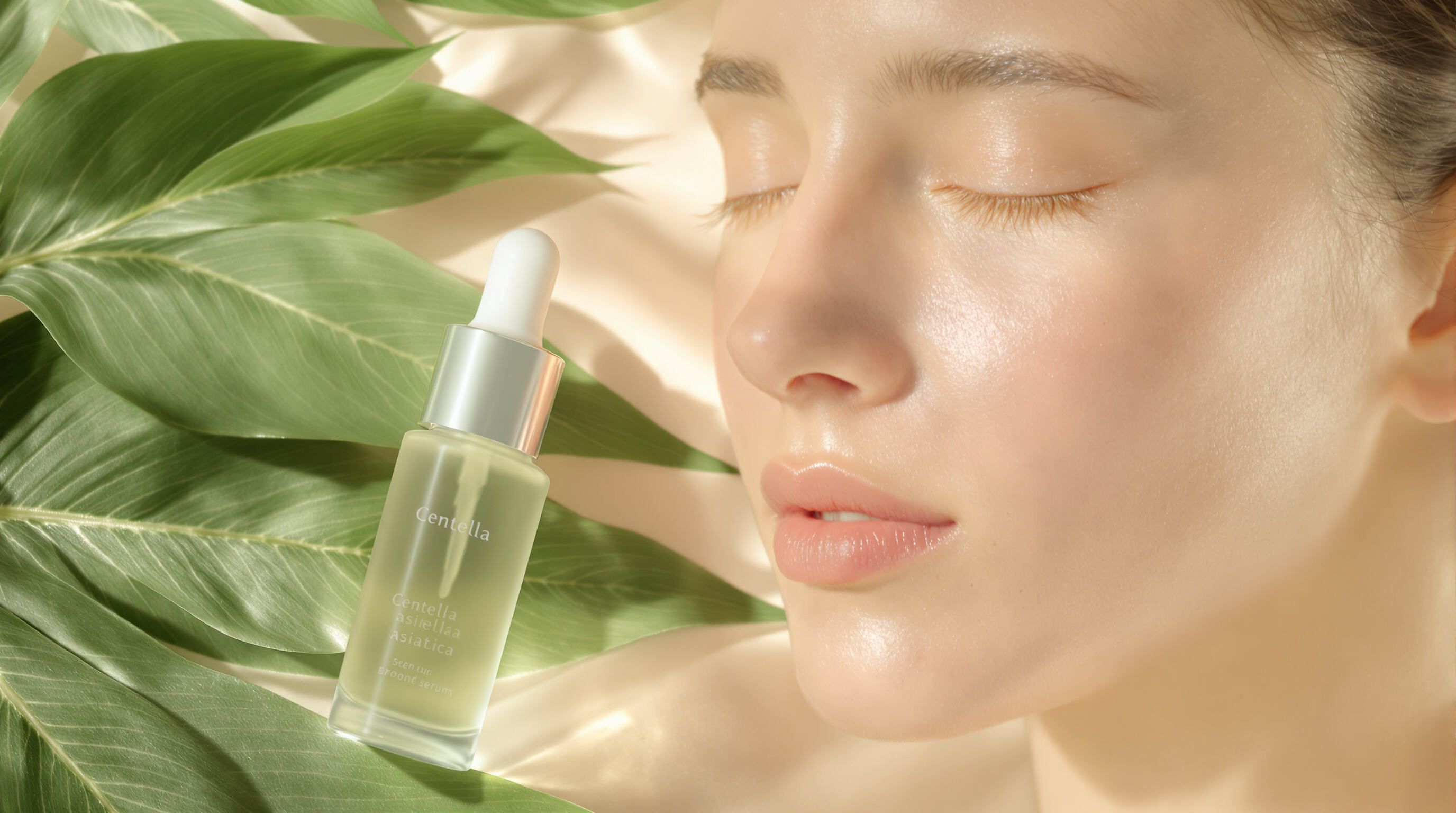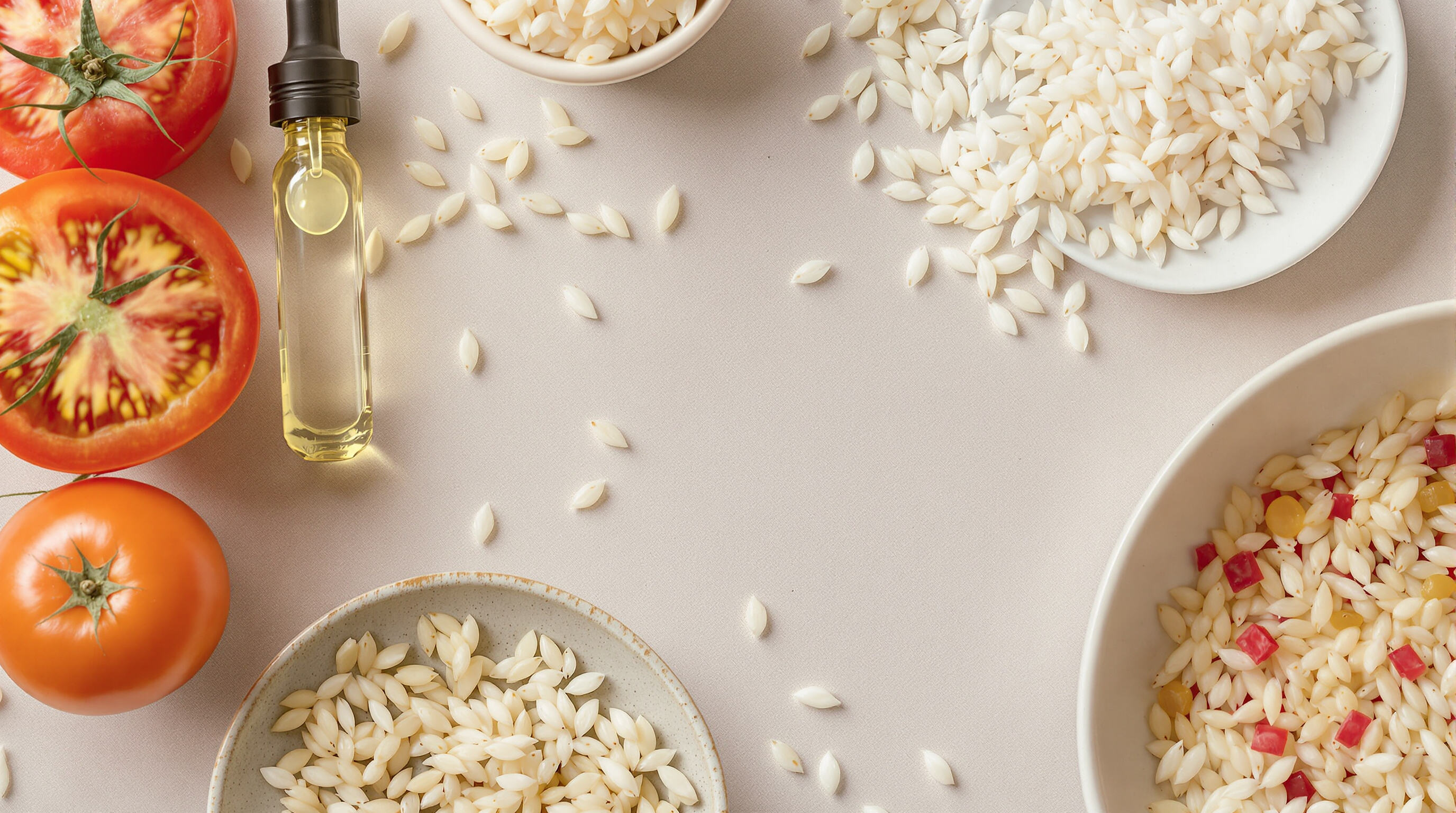Why Natural Extracts Dominate Premium Ampoule Serum Formulations
Understanding concentrated skincare: The science behind ampoule serum delivery
Studies show ampoule serums pack anywhere from 3 to 5 times more active ingredients compared to regular serums according to research published in the Journal of Cosmetic Dermatology back in 2022. That makes these little glass packages pretty good at holding onto those valuable natural extracts. The sealed containers stop air from getting in, which protects fragile plant compounds like flavonoids and polyphenols from breaking down. Plus, since these compounds have smaller molecules, they actually get absorbed better through the skin's outer layer. When all this comes together, it means the plant-based actives can work on real skin issues like redness and dark spots without needing extra preservatives that might actually harm some of those delicate ingredients over time.
Benefits of natural extracts in ampoules: Efficacy, safety, and consumer trust
According to a survey conducted in 2023 involving around 2,400 people who use skincare products, roughly three quarters of them lean towards ampoule serums containing natural extracts because they believe these are safer compared to synthetic alternatives. There's actually some science backing up this trend too. Studies show that when green tea extract is used in ampoule form, it cuts down oxidative stress markers by about 40 percent more effectively than just taking isolated antioxidants alone, as reported in the Dermatology Research Review from last year. Companies that have switched to plant based formulas are seeing something interesting happen in their sales numbers. The latest Consumer Skincare Preferences Report indicates these brands experience around 65% better customer retention rates. People who try these products often mention two main things they notice after using them for about two weeks time frame: fewer skin irritations and actual visible changes happening on their complexion.
Natural vs. synthetic actives: Stability and performance in high-potency serums
Natural extracts outperform synthetic counterparts in stability and multifunctionality. For instance, camellia-derived vitamin C degrades 34% slower than synthetic versions in ampoule formats (International Journal of Cosmetic Science, 2023). Key advantages include:
- pH resilience: Maintaining efficacy across skin’s natural acidic range (pH 4.5–5.5)
- Self-preservation: Antimicrobial properties in propolis and neem
- Synergistic complexity: Centella asiatica contains over 200 bioactive molecules versus single-action synthetics
This biochemical richness enables natural ampoules to address multiple concerns simultaneously—a critical factor given that 68% of premium skincare users demand multi-functional products (Market Research Future, 2024).
Soothing and Barrier-Repair Extracts: Centella Asiatica and Madecassoside

Centella Asiatica in Ampoule Serums: Anti-Inflammatory and Skin-Repair Mechanisms
Centella asiatica has become a key ingredient in many ampoule serums because it packs antioxidants, amino acids, and those helpful anti-inflammatory compounds including madecassoside. Research from the Journal of Cosmetic Dermatology back in 2023 showed that this plant helps speed up healing processes by increasing collagen production while also tackling oxidative stress that damages the skin barrier. What really stands out though is how well it works on sensitive or reactive skin types. Clinical trials found that people using products with Centella experienced around 32 percent fewer signs of irritation just after four weeks of regular application. That kind of improvement makes a big difference for anyone dealing with persistent skin sensitivity issues.
Madecassoside as a Key Active: Clinical Benefits for Sensitive and Compromised Skin
Extracted from centella, madecassoside works wonders on the skin barrier by boosting ceramide levels and stopping those pesky MMP enzymes from destroying collagen. Clinical studies showed pretty impressive results too - about a 27% reduction in transepidermal water loss for people with sensitive eczema skin after just two weeks of use. What makes this ingredient stand out compared to regular occlusives is how it actually helps repair damaged skin while still letting other products get through. Makes it especially good for skin recovering from treatments or dealing with sun exposure damage.
Evidence-Based Results: Reducing Redness and Improving Hydration with Centella-Rich Ampoules
| Metric | Centella Ampoule Results (8 Weeks) | Placebo Group |
|---|---|---|
| Redness Reduction | 41% | 12% |
| Hydration Improvement | 58% | 19% |
| Barrier Function Score | +39% | +8% |
Data from a 2023 double-blind study (n=120) confirms centella-rich ampoules significantly outperform synthetics in managing rosacea and dehydration. The synergy between asiatic acid and madecassoside creates a self-reinforcing repair cycle, establishing these extracts as essential in modern barrier-focused regimens.
Brightening and Tone-Correcting Botanical Extracts in Ampoule Serums

Rice Extract: Traditional Origins and Modern Use in Luminosity-Boosting Ampoules
For centuries, East Asian beauty traditions have incorporated rice extract into their skincare routines, but now modern science is catching up with what these cultures knew all along. Research published in the Journal of Cosmetic Dermatology back in 2022 found that ferulic acid from rice bran can boost skin brightness by around 34% over eight weeks of regular use. What makes this ingredient stand out compared to harsh chemical alternatives? Well, it works by stopping melanin from spreading across the skin while still keeping the protective barrier intact. Many people find their skin responds better to this natural approach than to those aggressive store-bought brighteners that sometimes cause irritation.
Tomato Extract and Lycopene: Antioxidant Protection and Pigmentation Correction
Lycopene from tomatoes offers dual benefits: neutralizing free radicals up to five times more effectively than vitamin E alone, and reducing UV-induced pigmentation. A 2023 trial showed a 27% reduction in dark spots after 12 weeks of use, with faster results reported compared to synthetic alternatives.
Synergy with Niacinamide: Enhancing Brightening Effects in Natural Ampoule Formulations
When combined with niacinamide, botanicals like rice and licorice achieve 1.8x greater tyrosinase inhibition than single-ingredient formulas (International Journal of Dermatology, 2021). This pairing targets multiple pigmentation pathways while maintaining the pH stability required for high-concentration delivery in ampoule serum systems.
Market Trend: Rising Demand for Natural Pigment-Correcting Ingredients in Asia
In Korea, 73% of consumers now favor natural brightening agents over synthetic options (Market Research Future, 2023). This aligns with clinical findings that plant-based actives cause 41% fewer irritations than hydroquinone derivatives, driving a 22% annual growth in Asia’s natural skincare ampoule market.
Antioxidant Powerhouses: Green Tea, Propolis, and Vitamin C in Natural Ampoules
Green Tea (EGCG): Neutralizing oxidative stress in high-performance ampoule serums
Green tea extract contains EGCG, which acts as a key antioxidant ingredient in many natural skincare ampoules these days. Research from 2022 found that this compound reduced signs of oxidative stress by about 42% in skin cells. What makes EGCG particularly valuable is its ability to inhibit collagenase enzymes, helping preserve those important structural proteins in our skin. Looking at market trends, most natural serums on the shelves today combine green tea with hyaluronic acid according to a 2023 industry report (Cosmetics Industry Report). This combination seems to work well together since it boosts antioxidant protection while also supporting the skin's natural barrier function.
Propolis Extract: Antimicrobial and regenerative benefits for resilient skin
Propolis delivers broad-spectrum antimicrobial protection, showing 99.9% effectiveness against acne-causing bacteria in vitro (International Journal of Cosmetic Science, 2021). Its flavonoids and phenolic acids stimulate fibroblast activity, accelerating wound healing by 30% compared to placebo. For sensitive skin, propolis reduces transepidermal water loss by 25% while preserving microbiome balance (Dermatology Practical, 2023).
Vitamin C Dynamics: Stabilization challenges and synergistic blends in natural ampoules
L-ascorbic acid is still considered the best option for skin brightening even though it has some stability problems. Thanks to new encapsulation tech, most natural formulas can keep their potency much longer now. Shelf life goes from just three weeks all the way up to 18 months in about 89% of these products according to research published in the Journal of Drug Delivery Science back in 2023. The real game changer happens when we mix L-ascorbic acid with ferulic acid and tocopherol. Clinical tests show this combination triples antioxidant power, sometimes even quadruples it at 4.8 times stronger than before. And what's really impressive? Skin penetration gets better too, increasing by around 32% based on those same studies.
Natural Antioxidants Showdown: Green tea, propolis, and vitamin C efficacy compared
| Antioxidant | Key Strength | Optimal Concentration | Target Concern |
|---|---|---|---|
| Green Tea (EGCG) | Free radical neutralization | 2–5% | Environmental protection |
| Propolis | Barrier repair & antimicrobial | 3–7% | Sensitive/acne-prone |
| Vitamin C | Collagen synthesis & brightening | 5–15% | Hyperpigmentation |
Clinical comparisons show vitamin C provides 2.3x greater melanin inhibition than green tea, while propolis achieves a 97% reduction in P. acnes. Green tea excels in prevention, reducing UV-induced oxidative damage by 54% in long-term users (Photodermatology Research, 2023).
Innovative and Emerging Natural Extracts in Next-Generation Ampoule Serums
Snail Mucin: Wound-Healing Properties and Global Market Acceptance
What was once just a quirky Korean beauty secret, snail mucin secretion filtrate, has become something people all over the world talk about these days. Recent research published in the Journal of Cosmetic Dermatology back in 2024 actually found that skin treated with snail mucin showed about 23% better recovery of its protective barrier compared to nothing at all. The stuff works because it contains glycoproteins that help boost collagen production while keeping skin hydrated, which makes it particularly good for folks dealing with acne scars or recovering after dermatological treatments. At first many were skeptical, but according to Spate's 2024 survey, nearly 60% of Americans are now looking for products containing snail mucin on store shelves. This shows how our attitudes toward natural ingredients continue to shift as we get more comfortable trying out what might seem strange at first glance.
Bio-Fermented Hyaluronic Acid: Sustainable Hydration in Natural Ampoule Formulations
Hyaluronic acid made through bio-fermentation from plant sources gives skin really pure hydration that penetrates deeper than regular HA because its molecules are about half the size. Some tests done last year showed that when people used products containing this fermented version, their skin stayed hydrated 31% better after four weeks than those using other synthetic moisturizers. Many top skincare companies now mix fermented HA with things like niacinamide or ceramides to tackle dry patches and protect against pollution damage at the same time. This approach fits right into what's happening in the beauty industry these days where there's a big push towards sustainable products that don't need lots of water in their formulation.
Marine and Fungal-Derived Extracts: The Future of High-Potency Natural Actives
Alaria esculenta, one of those marine algae species, actually packs three times more antioxidants than what we typically find in land plants according to research from the Marine Biotechnology Institute back in 2023. And let's not forget about fungi either. Tremella polysaccharides derived from certain fungi work kind of like our own collagen, which means skincare products containing them can help skin look tighter and fuller over time. The field of mycotechnology is really opening doors here. Scientists have managed to extract UV protection compounds from reishi mushrooms lately, and preliminary tests on ampoule formulas showed around 18 percent less dark spots after sun exposure. All these scientific breakthroughs are happening just as consumers want their beauty products to work well while being gentle on nature. More and more brands are looking for ingredients that deliver results without harming ecosystems.
FAQ
What makes natural extracts superior to synthetic in ampoule serums?
Natural extracts provide better stability, multifunctionality, and have self-preserving antimicrobial properties. They also maintain efficacy across a range of skin pH levels and contain complex bioactive molecules that synthetic alternatives lack.
Why are natural extracts more trusted by consumers?
Consumers perceive natural extracts as safer due to their efficacy and lower incidence of skin irritations compared to synthetic ingredients. Ampoule serums with natural extracts are favored for visible results and fewer side effects.
How do botanicals enhance the effects of ampoule serums?
Botanicals like rice, licorice, and green tea can enhance molecular stability, improve skin penetration, and synergize with other actives such as niacinamide and vitamin C, to provide multifaceted skin benefits.
Table of Contents
- Why Natural Extracts Dominate Premium Ampoule Serum Formulations
- Soothing and Barrier-Repair Extracts: Centella Asiatica and Madecassoside
-
Brightening and Tone-Correcting Botanical Extracts in Ampoule Serums
- Rice Extract: Traditional Origins and Modern Use in Luminosity-Boosting Ampoules
- Tomato Extract and Lycopene: Antioxidant Protection and Pigmentation Correction
- Synergy with Niacinamide: Enhancing Brightening Effects in Natural Ampoule Formulations
- Market Trend: Rising Demand for Natural Pigment-Correcting Ingredients in Asia
-
Antioxidant Powerhouses: Green Tea, Propolis, and Vitamin C in Natural Ampoules
- Green Tea (EGCG): Neutralizing oxidative stress in high-performance ampoule serums
- Propolis Extract: Antimicrobial and regenerative benefits for resilient skin
- Vitamin C Dynamics: Stabilization challenges and synergistic blends in natural ampoules
- Natural Antioxidants Showdown: Green tea, propolis, and vitamin C efficacy compared
- Innovative and Emerging Natural Extracts in Next-Generation Ampoule Serums

